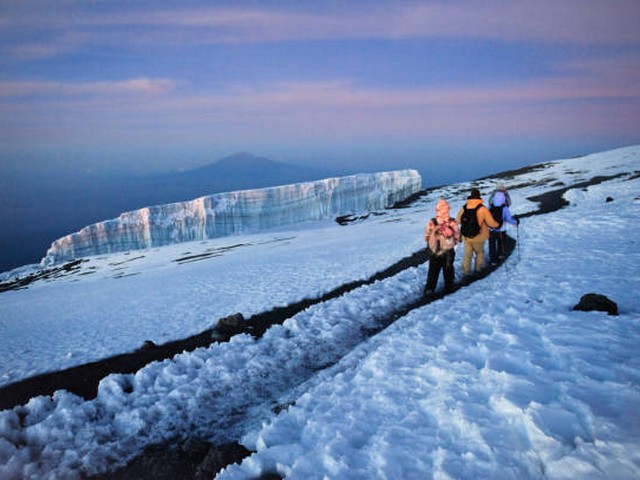Preserving the Roof of Africa: Kilimanjaro National Park’s Waste Management Efforts
Mount Kilimanjaro, an emblem of Africa’s majestic natural beauty, isn’t just a mountain; it’s a beacon for adventurers, environmentalists, and nature lovers from all over the globe. As a crucial aspect of preserving its pristine condition, effective waste management practices are vital. At Kilimanjaro Centre for Trekking and Ecotourism (KCTE), we are dedicated not only to providing unparalleled trekking experiences but also to safeguarding the environment that makes these experiences possible. In this blog post, we delve into the innovative waste management practices at Kilimanjaro National Park and why they are essential for sustainable tourism.
The Imperative of Sustainable Practices on Kilimanjaro
Kilimanjaro isn’t just a mountain; it’s a fragile ecosystem that is vulnerable to the impacts of human activity. As the highest peak in Africa, it attracts over 30,000 climbers annually. This heavy foot traffic, although beneficial for the local economy, poses significant environmental challenges, particularly concerning waste management. Sustainable practices are not just advisable; they are imperative to maintain the ecological balance and ensure that future generations can also enjoy the awe-inspiring beauty of Kilimanjaro.
Leading the Way in Environmental Stewardship
Green Steps at the Roof of Africa
At KCTE, we recognize our responsibility towards Mother Nature and are proud to align with the park’s regulations and initiatives that ensure minimal environmental impact. Here’s how waste management on Kilimanjaro is addressed:
1. Waste Reduction Initiatives
The journey to a cleaner Kilimanjaro starts with reducing the waste produced. Efforts include encouraging climbers to minimize disposable items and use biodegradable products. Our guides and porters are trained to enforce these practices, ensuring all participants understand and comply.
2. Segregation and Recycling
Waste segregation is a critical component. Different bins for organic, plastic, and metallic waste are provided at each campsite. This segregation facilitates recycling processes off the mountain, helping reduce the overall environmental footprint.
3. Carry In, Carry Out Policy
Perhaps the most impactful practice is the strict ‘carry in, carry out’ policy. Everything brought to the mountain must leave with you. This rule is diligently enforced by our team at KCTE, ensuring that our treks leave no trace on the trails or campsites.
4. Use of Eco-friendly Toilets
To mitigate the impact of human waste, Kilimanjaro National Park has installed eco-friendly toilets that significantly reduce the potential contamination of water sources. These facilities are maintained under strict hygienic conditions to protect both the environment and climbers’ health.
5. Regular Clean-Up Campaigns
KCTE participates in and sponsors regular clean-up campaigns aimed at collecting trash that might have been inadvertently left behind. These initiatives also provide an opportunity for volunteers and local communities to get involved in conservation efforts.
The Role of Every Climber
While the policies and practices implemented by park authorities and tour operators like KCTE form the backbone of conservation efforts, the role of every climber in these initiatives cannot be overstated. Awareness and adherence to these practices are crucial. By choosing to climb with operators who prioritize sustainability, every climber contributes to the preservation efforts.
Your Adventure Awaits: Climb with Conscience
Choosing KCTE means opting for an operator that not only provides a memorable adventure but also cares deeply for the environment. By booking your Kilimanjaro climb with us, you become a part of our extended family committed to sustainability and responsible tourism.
FAQs About Climbing Kilimanjaro and Sustainability
What can I do to minimize my impact while climbing Kilimanjaro?
Opt for reusable over disposable items, follow the ‘carry in, carry out’ rule, and engage with eco-conscious operators like KCTE.
Are there any penalties for littering on Kilimanjaro?
Yes, the Kilimanjaro National Park authority imposes fines and penalties for littering. Adherence to park rules is mandatory and monitored.
How does using eco-friendly toilets help the environment?
These facilities prevent the contamination of water sources and reduce the environmental footprint of human waste.
Can I participate in a clean-up campaign?
Absolutely! Contact us at KCTE to find out how you can get involved in upcoming clean-up drives and contribute to conservation efforts.
Conclusion: The Call of Kilimanjaro
Mount Kilimanjaro calls not just to those seeking adventure but also to those willing to protect its timeless majesty. At KCTE, we are committed to offering experiences that honor this magnificent mountain through responsible and sustainable tourism practices. Book your climb with us and be a part of a greater journey towards conservation and adventure. Together, let’s keep Kilimanjaro majestic for generations to come.
Are you ready to take the step towards an adventure that cares? Visit our website to learn more about our eco-friendly climbing packages and join us in making a difference one step at a time.




